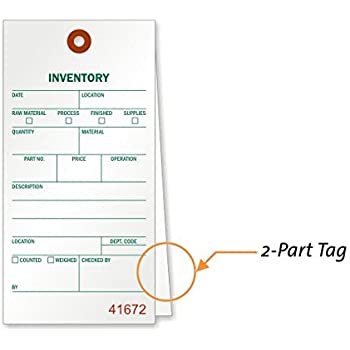
Such regular and timely reconciliations support financial integrity and informed decision-making. The analytics review approach can also reveal fraudulent activity or balance sheet errors. In this case, businesses estimate the amount that should be in the accounts based on previous account activity levels. Account reconciliation is done to ensure that account balances are correct at the end of an accounting period.
The account reconciliation process also helps to identify any outstanding items that need to be taken into consideration in the reconciliation process. For example, reconciling general ledger accounts can help maintain accuracy and would be considered account reconciliation. While reconciling your bank statement would be considered a financial reconciliation since you’re dealing with bank balances. These practices contribute to reliable financial reporting, which is integral to almost every aspect of operating and growing a business.
Whether you have high transaction volumes or complex transaction scenarios, Stripe’s reconciliation solution offers scalable and reliable support for your financial operations. Accountants typically perform an account reconciliation for all their asset, liability, and equity accounts. This process involves reconciling credit card transactions, accounts payable, accounts receivable, payroll, fixed assets, and subscriptions to ensure that all are properly accounted for and balanced.
Investigate discrepancies
After 60 days, the Federal Trade Commission (FTC) notes, they will be liable for “All the money taken from your ATM/debit card account, and possibly more—for example, money in accounts linked to your debit account.” Nearly a third of the businesses are gearing up to digitally transform their accounting operations using a slew of technologies, including cloud, AI, analytics, and RPA. But the digitization of the accounting processes, including account reconciliation and financial close, requires strong back-end data management policies debit memo and credit memos in accounts payable and infrastructure. Accuracy and completeness are the two most important things when reconciling accounts, and these are what accounts for effective and proper account reconciliation. Additionally, reconciling accounts on time consistently is also essential to maintaining financial integrity.
Whether it’s reconciling bank statements, vendor accounts, or intercompany transactions, each type plays a pivotal role in ensuring that records are consistent and errors are promptly identified and corrected. Bookkeeping reconciliation is used by companies to make sure their financial records are free of any errors. To do this, companies periodically reconcile their financial records with external documents. For example, a company may reconcile their general ledger and subledgers monthly with bank statements and vendor invoices. Account reconciliation is necessary for asset, liability, and equity accounts since their balances are carried forward every year. During reconciliation, you should compare the transactions recorded in an internal record-keeping account against an external monthly statement from sources such as banks and credit card companies.
The process typically involves comparing accounts in the company’s general ledger and sub-ledgers with external financial documents like invoices, receipts, and bank statements. This process is crucial for identifying and correcting discrepancies, errors, or fraudulent activities. Reconciling your bank statements simply means comparing your internal financial product cost and period cost defined records against the records provided to you by your bank. This process is important because it ensures that you can identify any unusual transactions caused by fraud or accounting errors.
Identify discrepancies
The content in this article is for general information and education purposes only and should not be construed as legal or tax advice. Stripe does not warrant or guarantee the accuracy, completeness, adequacy, or currency of the information in the article. You should seek the advice of a competent lawyer or accountant licensed to practise in your jurisdiction for advice on your particular situation. A profit and loss statement, also known as an income statement summarizes revenue and expenses that have been incurred during a specific period. HighRadius’ AI-based Record-to-Report solution that enables faster Financial Close and accurate, automated Account Reconciliation. So, thoroughly checking the capabilities of the AI solutions you shortlist is crucial.
Profit and Loss Statements
- While very small businesses can use cash basis accounting, if you have employees or have depreciable assets, you’ll need to use accrual basis accounting.
- Accounting reconciliation plays a fundamental role in ensuring that financial statements are reliable, detecting errors, preventing fraud and maintaining compliance with regulatory requirements.
- Some reconciliations are necessary to ensure that cash inflows and outflows concur between the income statement, balance sheet, and cash flow statement.
- Businesses are generally advised to reconcile their accounts at least monthly, but they can do so as often as they wish.
It involves comparing the company’s official records, like the balance sheet, with supporting documents such as bank statements and transaction details. If the numbers at the end don’t match, accountants dig into the reasons for the differences. They then fix any mistakes or missing transactions by making the necessary adjustments in the records.
If the indirect method is used, the cash flow from the operations section is already presented as a reconciliation of the three financial statements. Other reconciliations turn non-GAAP measures, such as earnings before interest, taxes, depreciation, and amortization (EBITDA), into their GAAP-approved counterparts. With real-time reconciliation capabilities, HighRadius ensures that your financial records are updated daily. This is particularly helpful to organizations where a large number of transactions take place every day. Its powerful matching algorithms quickly identify and resolve variances, increasing speed and accuracy.

Account reconciliation is a fundamental step in the financial close and sets the basis for closing the accounts. But given the large volumes of data, matching records or reconciliation can be a strenuous activity. Account reconciliation is typically carried out by accountants during monthly and year-end financial closing processes. Alternatively, businesses may opt for real-time adjusting entries reconciliation using specialized automation software integrated with their ERP (Enterprise Resource Planning) system. This software not only automates the reconciliation process but also provides a helpful audit trail for reference. In single-entry bookkeeping, every transaction is recorded just once rather than twice, as in double-entry bookkeeping, as either income or an expense.

Leave a Reply